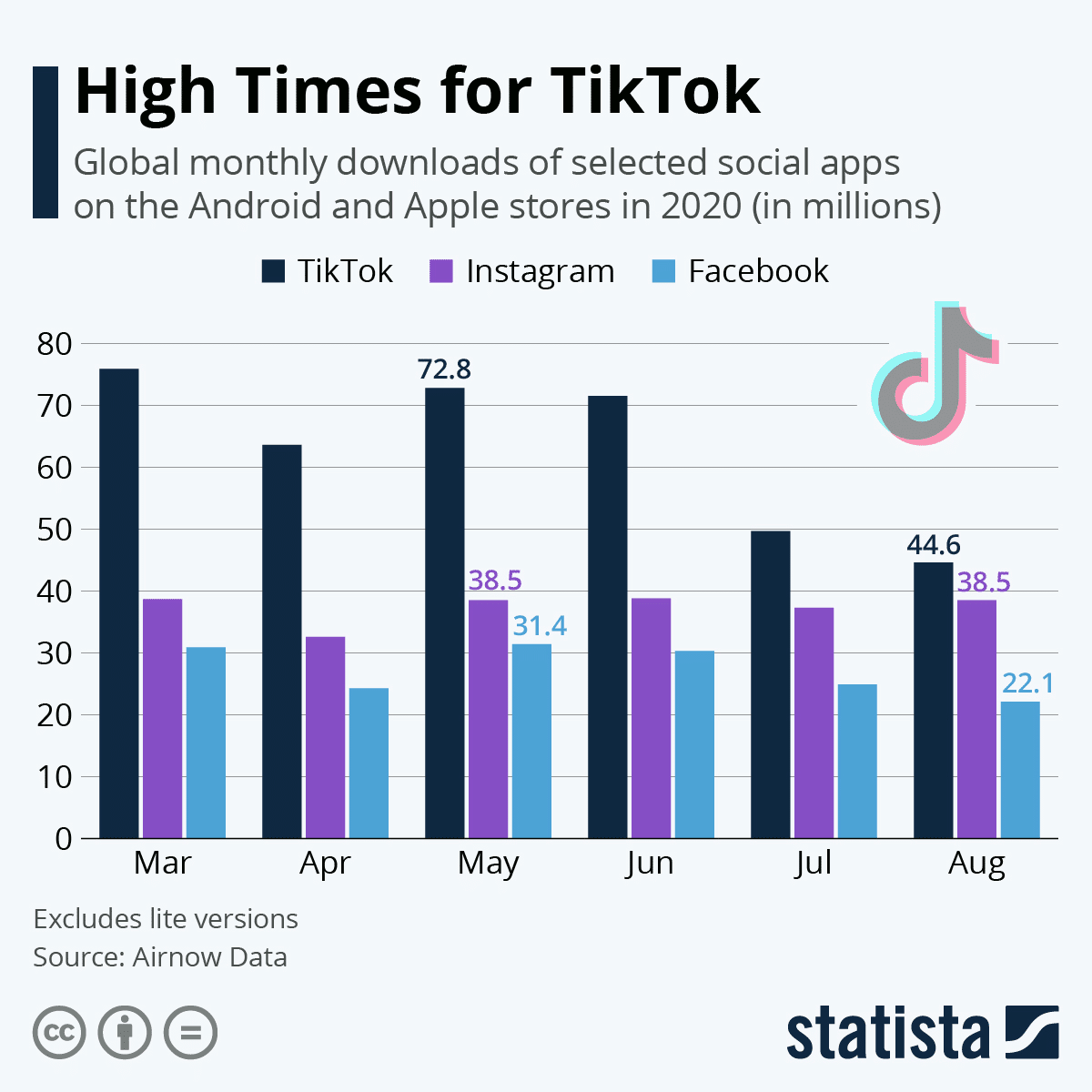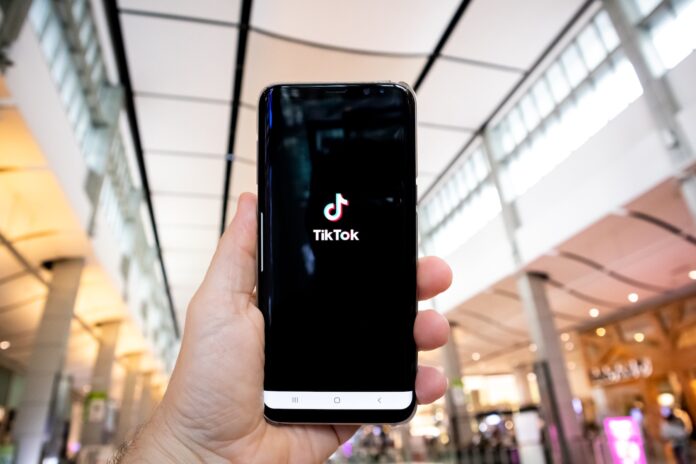It’s time to forget the days of the ‘YouTube Crew’ and the Love Island Instagram Influencers, a new kid has hit the block and they are transforming digital marketing as we know it. From content to E-commerce, TikTok has revolutionised the social media landscape and it’s time to talk about why.
From its large Gen Z audience to the international celebrities it has carried up to fame, TikTok has become the platform that everyone is talking about. So it’s no surprise that large fashion and beauty brands have stepped up their game and have begun the journey towards the future of the digital high street.

(Source: Statista)
With recent studies proving that TikTok downloads have only increased during the global pandemic, taking over social media giants such as Facebook and Instagram, it’s no wonder that business leaders have seen an opportunity to grow their brand digitally.
As Covid-19 causes more high street brands to fall through the net, read on to find out how the future of E-Commerce could be ever changed post-pandemic and why TikTok is leading the revolution.
What Is TikTok?
For those of you who have been living under a social media sized rock, TikTok is the new app that the younger generation are going crazy for. As a visual content platform, the site with over 1.1 billion users worldwide allows users to post short snappy videos of pretty much anything they like. From 15-second dances to quick comedy skits, the content creativeness is endless as our population becomes more and more tech-savvy.
Mimicking the original staples of social media platforms such as Vine and YouTube, TikTok allows its users to like and comment on a video, follow their favourite creators and even follow links to other suggested websites associated with all the TikTok trends.
This is where the E-Commerce giants step in. With such a large audience and the ability to post all kinds of content, brands are taking advantage of TikTok’s rise to fame in the same way they dominate both Instagram and YouTube. From in-built ads that allow users to follow a link straight to their products, to brand deals with opinion-leading TikTok influencers, many brand leaders have realised that their success is now digitally driven, rather than sitting on the high street.
The Death Of The High Street
As we continue to try and forget 2020, it’s likely that the death of the physical high street has been caused by the ever-growing complications of Covid-19. While taking away most of the globe’s freedom and forcing many to retreat back to their households, our health and wellbeing isn’t the only thing suffering as a result of the pandemic.
As we adjust to new living and working schedules, a reduction in commuters and a rise in working from home has only further reduced the need for the high street. Since the start of the pandemic, online retailers such as Amazon have seen a 51% rise in sales in 2020 alone, with this number only set to increase post-pandemic.
In contrast to this, once large consumer giants such as Arcadia, who owned the popular brand, Topshop have fallen into administration. Joining other high street retailers moving solely online. As E-commerce giants such as ASOS buy our street giants out, the days of window shopping are quickly approaching an end.
Instead, a brand new future of digital advertising is rising up, with TikTok leading the way.
The Rise Of The Influencer
From the days of YouTube favourites, Zoella and Danisnotonfire to the new age of TikTok superstars, Charli D’Amelio and Addison Rae, the rise of the influencer is definitely nothing new. With the Gen Z and Millennial population beginning to become the prime demographic for high street giants, it’s no surprise that brand leaders are using the ‘influencer’ to their advantage.

(Source: Statista)
Recent studies have shown that nearly half of social media users from 18 to 34 have participated in social commerce on platforms like Instagram, TikTok and Snapchat in the last year. This has been highly driven by the influence of social media celebrities who continue to influence an already impressionable nation.
With #AD and #Spon dominating the videos of our favourite TikTokers and Instagram Influencers, large brands use their widely celebrated platforms to influence the opinion of their audience. Whether it’s a new accessory or a new celebrity style, we’ve all seen this marketing technique in full force.
So how is this revolutionising the high street? As social media stars continue to define the future of the definition of a ‘celebrity’, large brands know that their opinion on a product has some serious weight in it. Better still, unlike older forms of TV advertising, consumers can not only hear about the new product but click a link below to shop it straight away, revolutionising the convenience of online shopping. In fact, according to new research from Mediakix, 80% of marketers find have stated that influencer promotion is a highly effective marketing strategy.
Smart Marketing
Creative Technology officer at WPP’s Mindshare, Jack Smyth claims that TikTok’s approachable nature allows brands to blend in amongst creative content streams, for the ultimate smart marketing.
“Culturally, TikTok is well placed for live-streamed commerce to capture the dissolving distinction between content and commerce because it doesn’t feel as polished as other platforms” he added in a recent interview with Social Media Week, suggesting that TikTok could rise up against other advertising platforms such as Instagram.
What’s more, the announcement of TikTok’s new partnership with Shopify, a start-up online retailer for small businesses, is only set to encourage the birth of a true digital high street. As Shopify tracks TikTok’s trends and insights, it is helping businesses embrace new selling strategies and make unique connections with users in order to target their advertisements.
In a recent interview, Director of Shopify, Shimona Mehta described the partnership as the beginning of the future of online shopping and a new way to target demographics: “Brands are having to compete like never before to get the attention of buyers. The goal is for businesses to make it easier for buyers to discover their brands. With this new TikTok partnership, Shopify merchants in the UK can connect with new customers in a way that can help them build their brand, drive sales and create engaged communities”.
Looking To The Future
The future of the high street seems highly likely to become completely digitalised, with many younger consumers viewing physical shops as a secondary addition to their favourite brand’s online platform. As TikTok continues to rise up amongst Gen Z trendsetters, this is just the beginning of a social media orientated shopping experience that is here to stay.
PLEASE SUPPORT US FOR JUST £2 A MONTH







